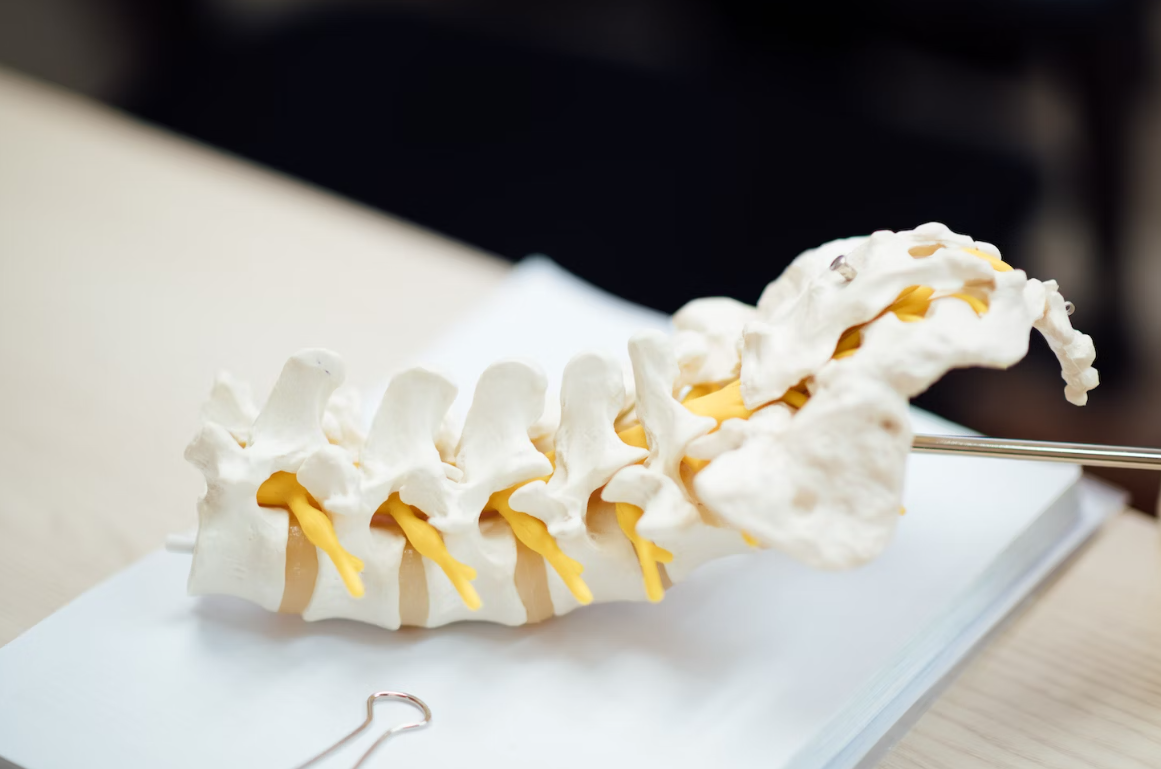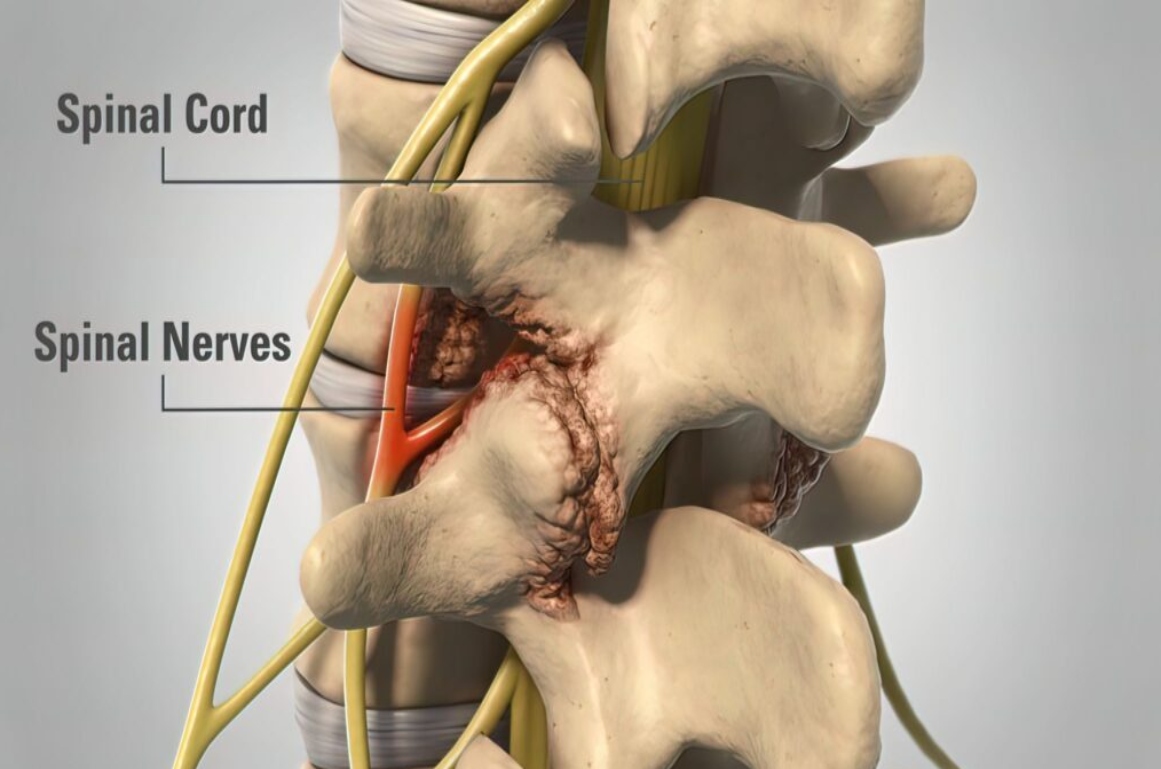SpinalFusion
For many patients with hard-to-treat spinal issues, a spinal fusion procedure can help them towards a life with less pain. Here’s what you should know about this surgery, the conditions it can help treat, and overall recovery. If you have additional questions, get in touch with the team at North Texas Neurosurgical Consultants for more information. We’re always happy to help.


What is spinal fusion surgery?
The spine consists of 33 vertebrae in five different spinal regions. From the top to the bottom, these regions are:
-
Cervical
-
Thoracic
-
Lumbar
-
Sacral
-
Coccyx
Intervertebral discs separate and cushion the vertebrae in each section ensuring comfortable movement in all directions the spine travels. Nerves also flow up and down the spinal column and branch out, sending signals for movement and sensation from all areas of the body. Connected with ligaments and tendons, each separate spinal joint—including the facet joints that connect each separate vertebra—is at once strong and vulnerable.
When a condition in the spine leads to severe pain that is not successfully treated with another approach, spinal fusion surgery may be a good option.
This procedure permanently fuses one bone to another to prevent painful movement. Think of spinal fusion as setting a broken bone. In spinal fusion, your doctor treats the separate vertebrae as one bone and fuses them together with hypoallergenic hardware. The goal is to reduce or eliminate pain when other procedures and lifestyle changes have been ineffective to restore the spine’s stability.
The areas of the spine with the most movement are also the areas where spinal fusion is often most effective in reducing pain.
Because the thoracic, sacral, and coccyx areas of the spine are already relatively immobile, surgery in these areas is rare. The two remaining regions, the cervical spine of the neck and the lumbar region in the lower back, are the areas most often treated with spinal fusion surgery.
Spinal fusion may help patients with the following conditions:
-
Spinal stenosis
-
Herniated discs
-
Degenerative disc disease
-
Vertebral fracture
-
Scoliosis (curvature of the spine)
-
Weakness or spinal instability due to severe arthritis, tumors, or infections
-
Spondylolisthesis (a condition in which one vertebra slips onto the vertebra below it, causing severe pain)
It is important to approach spinal fusion surgery as part of a comprehensive treatment plan that addresses lifestyle changes and other interventional techniques. This procedure is not necessarily the first tool to reach for, but it can be a powerful solution when other treatments are unsuccessful.
Spinal fusion surgery success rates
In general, studies suggest that spinal fusion surgery for spondylolisthesis was most successful, with a lower chance of revision surgery over time.
Patients who have the most success with spinal fusion surgery are committed to a comprehensive approach to their recovery. That is, they make permanent lifestyle changes for a healthy diet and more exercise to support their recovery. This procedure requires patient participation in the healing process. Those patients who did not have underlying health conditions and were reasonably healthy (other than their back pain) also saw higher success rates.
It is important to understand that spinal fusion surgery is rarely a first-line treatment for back pain of any kind. Although rates of spinal fusion surgery are rising across the globe (and increasing the skills and experience of the surgeons who perform it), this is a serious surgery that should be considered only after other treatments have proven ineffective. The best way to decide if it’s right for you is to have a candid conversation with your surgeon about all of your options.
Patient recovery times vary, depending on a variety of factors. In general, you may spend several days in the hospital after spinal fusion surgery to monitor your reaction to anesthesia and levels of pain. During this time, the staff will also provide suggestions to gradually introduce safe movement.
Once your stay has ended, you will return home with a brace to support your spine and provide stability and comfort as it heals. The initial healing process can take up to six weeks as your vertebrae fuse together. You will also attend physical therapy when approved to do so by your surgeon in order to help you heal and build strength. In some cases, further pain management with medication may be required, but this varies from patient to patient.
Expect a full recovery time of three to six months. This will depend on your age, overall physical health, and any other underlying health concerns. Talk candidly with your doctor for their best overall assessment.
If you undergo surgery, you can expect our team at North Texas Neurosurgical Consultants to be with you every step of the way in your recovery. Our goal is to help patients understand the process of diagnosis, surgery, and recovery to ease their concerns and promote positive healing throughout recovery. We will provide the help and support you need for a successful procedure.
As with any other procedure, spinal fusion surgery comes with risks that are rare (but worth noting). These include:
-
Infection
-
Blood clots or excessive bleeding
-
Respiratory issues
-
Heart attack or stroke during surgery
-
Slow or inadequate wound healing
-
Reactions to medications or anesthesia
The most serious risks include blot clots that can travel to the lungs. It is important to immediately contact your doctor if you experience any of the following symptoms.
-
Sudden swelling in the calf, ankle, or foot
-
Redness or tenderness above or below the knee
-
Calf or groin pain
-
Shortness of breath
Good communication with your surgical team can help you better understand the risks and potential benefits of spinal fusion surgery, so talk to your doctor. Preparing for your surgery beforehand can also help you avoid some risks.




